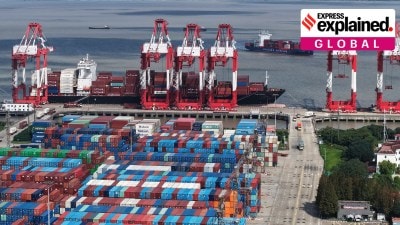Hindustan missing in the debate between India and Bharat
The use of the word 'Hindustan' to refer to a large part of South Asia holds many popular references in the collective memory of Punjabis.
 On Tuesday, the Opposition INDIA bloc slammed the ruling Bharatiya Janata Party (BJP) over “President of Bharat” and said it was an attempt to “divide people” and “distort history”. (Representational image/ Rashtrapati Bhavan website)
On Tuesday, the Opposition INDIA bloc slammed the ruling Bharatiya Janata Party (BJP) over “President of Bharat” and said it was an attempt to “divide people” and “distort history”. (Representational image/ Rashtrapati Bhavan website) An official invitation from President Droupadi Murmu for a G20 Summit dinner to guests describing her as the “President of Bharat” and not President of India has triggered a political row over the name of the country.
On Tuesday, the Opposition INDIA bloc slammed the ruling Bharatiya Janata Party (BJP) over “President of Bharat” and said it was an attempt to “divide people” and “distort history”.
However, the history and context of the word ‘Hindustan’ are absent in the debate between ‘India’ and ‘Bharat’. The use of the word ‘Hindustan’ to refer to a large part of South Asia holds many popular references in the collective memory of Punjabis.
The founder of the Sikh religion, Guru Nanak Dev, mentioned the word Hindustan in Gurbani, which Sikhs believe to be the words of the Almighty. On page 360 of the Sikh’s holy book, Guru Granth Sahib, the loot and massacre that occurred during Babar’s invasion are documented.
In one of his famous verses, Guru Nanak said, “Khuraasaan Khasamaanaa Keeaa Hindhusathaan Ddaraaeiaa || Aapai Dhos N Dhaeee Karathaa Jam Kar Mugal Charraaeiaa || Eaethee Maar Pee Karalaanae Thain Kee Dharadh N Aaeiaa”.
It can be roughly translated as, “Having attacked Khurasan, Babar terrified Hindustan. The Creator Himself does not take the blame but has sent the Mughal as the messenger of death. There was so much slaughter that the people screamed. Didn’t you feel compassion, Lord?”
Guru Teg Bahadur, the ninth Guru of Sikhs sacrificed his life while defending the rights of Kashmiri Pandits. He is popularly known in Punjab as ‘Guru Teg Bahadur, Hind di Chadar’ and ‘Guru Teg Bahadur, Dharam Di Chadar’ or Guru Teg Bahadur the protector of Hind and religion.
Shah Muhammad (1780-1862), a Muslim poet, was known for his famous composition Jangnama-Singhan te Firingiyan, in which he documented the conflicts and wars between the British army and Sikhs and recounted the events that led to the end of Sikh rule.
Punjab was the last to fall into the British kitty. Shah Muhammad noted down this war as between Hind and Punjab. He wrote, “Jang Hind Punjab da hona laga dove paatshahi faujan bhariyan ni ajj hove sarkar taan mull pave Jihriyan Khalse ne tegan mariyan ni (The war between Hind and Punjab has started, and both armies are big. If Maharaja Ranjit Singh were alive, he would have doled out prize money for the fight put up by the Khalsa army)”.
The word Hindustan was also famous among the activists of the Ghadar Party during the freedom struggle in the early 20th century. Those who raised a rebellion against the British and called it Ghadar were mostly from Punjab.
“Hind Wasio Rakhna Yaad Sanu (Dear natives of Hind, keep us in your memories)” is the famous poem from the freedom struggle that most Punjabis have read or sung since 1947 to remember the Ghadaris. Bhagat Singh also joined the Hindustan Socialist Republican Party Association, and it is another reason that Hindustan became relevant in the context of the freedom struggle in Punjab.
Mahan Kosh by Kahan Singh Nabha, a Punjabi encyclopedia published in 1930, also has the map of undivided ‘Hindustan’. “The word ‘Hindustan’ has remained popular in Punjab well before the coming of the Mughals. It has many popular references in the collective memories of common Punjabis. The binary division around the words ‘Bharat’ and ‘India’ was created more after 1947,” said Dr Bhoj Raj, a scholar of history and languages who taught at Punjabi University Patiala.
“It could be due to Partition, as the word ‘Hindustan’ became more like a representation of religious identity. But it is a fact that the word ‘Hindustan’ was used more in Punjab before 1947, and it has many popular references from the context of history and literature,” added Raj.







